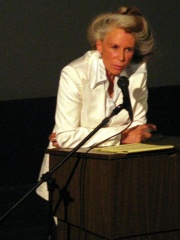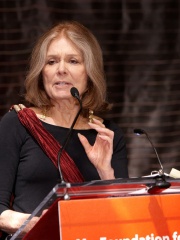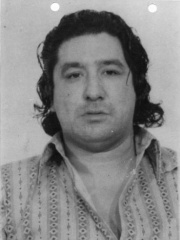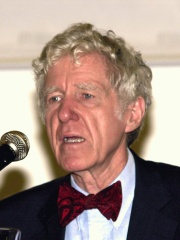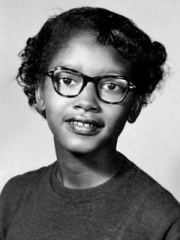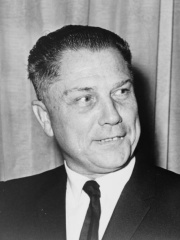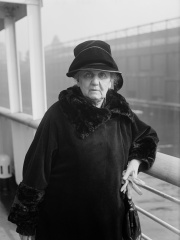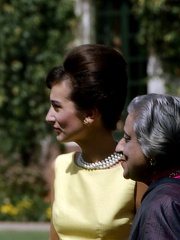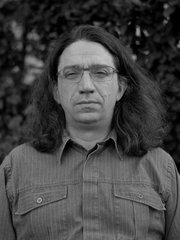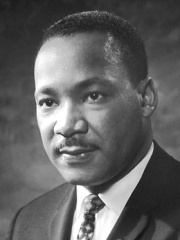
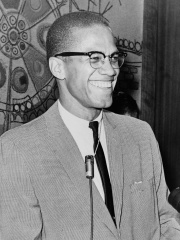
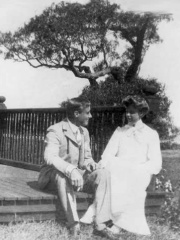
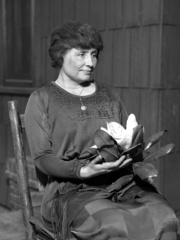
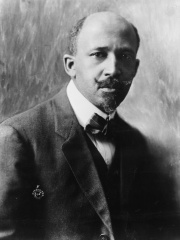
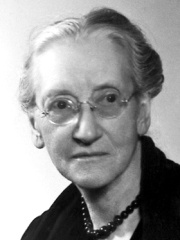
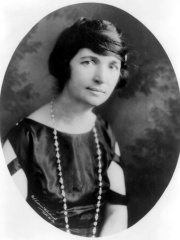
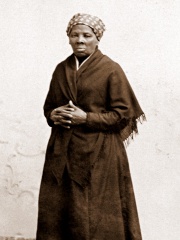
The Most Famous
SOCIAL ACTIVISTS from United States
This page contains a list of the greatest American Social Activists. The pantheon dataset contains 840 Social Activists, 171 of which were born in United States. This makes United States the birth place of the most number of Social Activists.
Top 10
The following people are considered by Pantheon to be the top 10 most legendary American Social Activists of all time. This list of famous American Social Activists is sorted by HPI (Historical Popularity Index), a metric that aggregates information on a biography's online popularity. Visit the rankings page to view the entire list of American Social Activists.

1. Martin Luther King Jr. (1929 - 1968)
With an HPI of 92.49, Martin Luther King Jr. is the most famous American Social Activist. His biography has been translated into 178 different languages on wikipedia.
Martin Luther King Jr. (born Michael King Jr.; January 15, 1929 – April 4, 1968) was an American civil rights activist and Baptist minister who was a leader of the civil rights movement from 1955 until his assassination in 1968. He advanced civil rights for people of color in the United States through the use of nonviolent resistance and civil disobedience against Jim Crow laws and other forms of legalized discrimination, which most commonly affected African Americans. A Black church leader, King participated in and led marches for the right to vote, desegregation, labor rights, and other civil rights. He oversaw the 1955 Montgomery bus boycott and was the first president of the Southern Christian Leadership Conference (SCLC), leading the unsuccessful Albany Movement in Albany, Georgia, and helping organize nonviolent 1963 protests in Birmingham, Alabama. King was one of the leaders of the 1963 March on Washington, where he delivered his "I Have a Dream" speech, and helped organize two of the three Selma to Montgomery marches during the 1965 Selma voting rights movement. There were dramatic standoffs with segregationist authorities, who often responded violently. The civil rights movement achieved pivotal legislative gains in the Civil Rights Act of 1964, the Voting Rights Act of 1965, and the Fair Housing Act of 1968. King was jailed several times. Federal Bureau of Investigation (FBI) director J. Edgar Hoover considered King a radical and made him an object of COINTELPRO from 1963. FBI agents investigated him for possible communist ties, spied on his personal life, and secretly recorded him. In 1964, the FBI mailed King a threatening anonymous letter, which he interpreted as an attempt to make him commit suicide. King won the 1964 Nobel Peace Prize for combating racial inequality through nonviolent resistance. In his final years, he expanded his focus to include opposition towards poverty and the Vietnam War. In 1968, King was planning a national occupation of Washington, D.C., to be called the Poor People's Campaign, when he was assassinated on April 4 in Memphis, Tennessee. James Earl Ray was convicted of the assassination, though it remains the subject of conspiracy theories. King's death led to riots in US cities. King was posthumously awarded the Presidential Medal of Freedom in 1977 and Congressional Gold Medal in 2003. Martin Luther King Jr. Day was established as a holiday in cities and states throughout the United States beginning in 1971; the federal holiday was first observed in 1986. The Martin Luther King Jr. Memorial on the National Mall in Washington, D.C., was dedicated in 2011.

2. Malcolm X (1925 - 1965)
With an HPI of 86.43, Malcolm X is the 2nd most famous American Social Activist. His biography has been translated into 97 different languages.
Malcolm X (born Malcolm Little, later el-Hajj Malik el-Shabazz; May 19, 1925 – February 21, 1965) was an African American revolutionary and human rights activist who founded Muslim Mosque, Inc. (MMI) and the Organization of Afro-American Unity (OAAU). He was also a prominent figure during the civil rights movement until his assassination in 1965. A spokesman and minister for the Nation of Islam (NOI) from 1952 until 1964, after which he left, he was a vocal advocate for black empowerment and the promotion of Islam within the African American community. A controversial figure accused of preaching violence, Malcolm X is also a celebrated figure with black people and Muslims worldwide for his pursuit of racial justice. Malcolm spent his adolescence living in a series of foster homes and with various relatives, after his father's death and his mother's hospitalization. He committed various crimes, being sentenced to eight to ten years in prison in 1946 for larceny and burglary. In prison, he joined the Nation of Islam, adopting the name Malcolm X to symbolize his unknown African ancestral surname while discarding "the white slavemaster name of 'Little'", and after his parole in 1952, he quickly became one of the organization's most influential leaders. He was the public face of the organization for 12 years, advocating black empowerment and separation of black and white americans, as well as criticizing Martin Luther King Jr. and the mainstream civil rights movement for its emphasis on non-violence and racial integration. Malcolm X also expressed pride in some of the Nation's social welfare achievements, such as its free drug rehabilitation program. From the 1950s onward, Malcolm X was subjected to surveillance by the Federal Bureau of Investigation (FBI). In the 1960s, Malcolm X began to grow disillusioned with the Nation of Islam, as well as with its leader, Elijah Muhammad. He subsequently embraced Sunni Islam and the civil rights movement after completing the Hajj to Mecca and became known as "el-Hajj Malik el-Shabazz", which roughly translates to "The Pilgrim Malcolm the Patriarch". After a brief period of travel across Africa, he publicly renounced the Nation of Islam and founded the Islamic Muslim Mosque, Inc. (MMI) and the Pan-African Organization of Afro-American Unity (OAAU). Throughout 1964, his conflict with the Nation of Islam intensified, and he was repeatedly sent death threats. On February 21, 1965, he was assassinated in New York City. Three Nation members were charged with the murder and given indeterminate life sentences. In 2021, two of the convictions were vacated. Speculation about the assassination and whether it was conceived or aided by leading or additional members of the Nation, or with law enforcement agencies, has persisted for decades. He was posthumously honored with Malcolm X Day, on which he is commemorated in various cities across the United States. Hundreds of streets and schools in the US have been renamed in his honor, while the Audubon Ballroom, the site of his assassination, was partly redeveloped in 2005 to accommodate the Malcolm X and Dr. Betty Shabazz Memorial and Educational Center. A posthumous autobiography, on which he collaborated with Alex Haley, was published in 1965.

3. Eleanor Roosevelt (1884 - 1962)
With an HPI of 86.11, Eleanor Roosevelt is the 3rd most famous American Social Activist. Her biography has been translated into 95 different languages.
Anna Eleanor Roosevelt ( EL-in-or ROH-zə-velt; October 11, 1884 – November 7, 1962) was an American political figure, diplomat, and activist. She was the longest-serving first lady of the United States, during her husband Franklin D. Roosevelt's four terms as president from 1933 to 1945. Through her travels, public engagement, and advocacy, she largely redefined the role. Widowed in 1945, she served as a United States delegate to the United Nations General Assembly from 1945 to 1952, and took a leading role in designing the text and gaining international support for the Universal Declaration of Human Rights. In 1948, she was given a standing ovation by the assembly upon their adoption of the declaration. President Harry S. Truman called her the "First Lady of the World" in tribute to her human rights achievements. Roosevelt was a member of the prominent and wealthy Roosevelt and Livingston families and a niece of President Theodore Roosevelt. She had an unhappy childhood, having suffered the deaths of both parents and one of her brothers at a young age. At 15, she attended Allenswood Boarding Academy in London and was deeply influenced by its founder and director Marie Souvestre. Returning to the U.S., she married her fifth cousin once removed, Franklin Delano Roosevelt, in 1905. Between 1906 and 1916 she gave birth to six children, one of whom died in infancy. The Roosevelts' marriage became complicated after Eleanor discovered her husband's affair with her social secretary, Lucy Mercer, in 1918. Due to mediation by her mother-in-law, Sara, the liaison was ended officially. After that, both partners started to keep independent agendas, and Eleanor joined the Women's Trade Union League and became active in the New York state Democratic Party. Roosevelt helped persuade her husband to stay in politics after he was stricken with a paralytic illness in 1921. Following Franklin's election as governor of New York in 1928, and throughout the remainder of Franklin's political career, Roosevelt regularly made public appearances on his behalf; and as first lady, while her husband served as president, she greatly influenced the present scope and future of the role. Roosevelt was, in her time, one of the world's most widely admired and powerful women. Nevertheless, in her early years in the White House she was controversial for her outspokenness, particularly with respect to her promotion of civil rights for African Americans. She was the first presidential spouse to hold regular press conferences, write a daily newspaper column, write a monthly magazine column, host a weekly radio show, and speak at a national party convention. On a few occasions, she publicly disagreed with her husband's policies. She launched an experimental community at Arthurdale, West Virginia, for the families of unemployed miners, later widely regarded as a failure. She advocated for expanded roles for women in the workplace, the civil rights of African Americans and Asian Americans, and the rights of World War II refugees. Following her husband's death in 1945, Roosevelt pressed the United States to join and support the United Nations and became its first delegate to the committee on Human Rights. She served as the first chair of the UN Commission on Human Rights and oversaw the drafting of the Universal Declaration of Human Rights. Later, she chaired the John F. Kennedy administration's Presidential Commission on the Status of Women. By the time of her death, Roosevelt was regarded as "one of the most esteemed women in the world"; The New York Times called her "the object of almost universal respect" in her obituary. In 1999, Roosevelt was ranked ninth in the top ten of Gallup's List of Most Widely Admired People of the 20th Century, and was found to rank as the most admired woman in thirteen different years between 1948 and 1961 in Gallup's annual most admired woman poll. Periodic surveys conducted by the Siena College Research Institute have consistently seen historians assess Roosevelt as the greatest American first lady.

4. Helen Keller (1880 - 1968)
With an HPI of 81.88, Helen Keller is the 4th most famous American Social Activist. Her biography has been translated into 109 different languages.
Helen Adams Keller (June 27, 1880 – June 1, 1968) was an American author, disability rights advocate, political activist and lecturer. Born in West Tuscumbia, Alabama, she lost her sight and her hearing after a bout of illness when she was 19 months old. She then communicated primarily using home signs until the age of seven, when she met her first teacher and life-long companion Anne Sullivan. Sullivan taught Keller language, including reading and writing. After an education at both specialist and mainstream schools, Keller attended Radcliffe College of Harvard University and became the first deafblind person in the United States to earn a Bachelor of Arts degree. Keller was also a prolific author, writing 14 books and hundreds of speeches and essays on topics ranging from animals to Mahatma Gandhi. Keller campaigned for those with disabilities and for women's suffrage, labor rights, and world peace. In 1909, she joined the Socialist Party of America (SPA). She was a founding member of the American Civil Liberties Union (ACLU). Keller's autobiography, The Story of My Life (1903), publicized her education and life with Sullivan. It was adapted as a play by William Gibson, later adapted as a film under the same title, The Miracle Worker. Her birthplace has been designated and preserved as a National Historic Landmark. Since 1954, it has been operated as a house museum and sponsors an annual "Helen Keller Day".
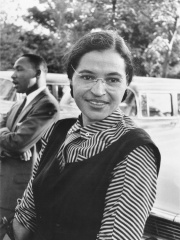
5. Rosa Parks (1913 - 2005)
With an HPI of 79.14, Rosa Parks is the 5th most famous American Social Activist. Her biography has been translated into 106 different languages.
Rosa Louise McCauley Parks (February 4, 1913 – October 24, 2005) was an American civil rights activist. She is best known for her refusal to move from her seat on a bus in Montgomery, Alabama, in defiance of Jim Crow racial segregation laws, in 1955, which sparked the Montgomery bus boycott. She is sometimes known as the "mother of the civil rights movement". Born in Tuskegee, Alabama, Parks grew up under Jim Crow segregation. She later moved to Montgomery and joined the city's chapter of the National Association for the Advancement of Colored People (NAACP) in 1943, serving as the organization's secretary. Despite policies designed to disenfranchise Black citizens, Parks successfully registered to vote after three separate attempts between 1943 and 1945. She investigated cases and organized campaigns around cases of racial and sexual violence in her capacity as NAACP secretary, including those of Recy Taylor and Jeremiah Reeves, laying the groundwork for future civil rights campaigns. Custom in Montgomery required Black passengers to surrender their seats in the front of the bus to accommodate white riders. The rows in the back were designated for Black riders. Before Parks's refusal to move, several Black Montgomerians had refused to do so, leading to arrests. When Parks was arrested in 1955, local leaders were searching for a person who would be a good legal test case against segregation. She was deemed a suitable candidate, and the Women's Political Council (WPC) organized a one-day bus boycott on the day of her trial. The boycott was widespread. Many Black Montgomerians refused to ride the buses that day. After Parks was found guilty of violating state law, the boycott was extended indefinitely, with the Montgomery Improvement Association (MIA) organizing its own community transportation network to sustain it. Parks and other boycott leaders faced harassment, ostracization, and various legal obstacles. The boycott lasted for 381 days, finally concluding after segregation on buses was deemed unconstitutional in the court case Browder v. Gayle. After the boycott ended, Parks experienced financial hardship and health problems due in part to her participation. In 1957, she relocated to Detroit, Michigan. She continued to advocate for civil rights, providing support for people such as John Conyers, Joanne Little, Gary Tyler, Angela Davis, Joe Madison, and Nelson Mandela. She was also a supporter of the Black power movement and an anti-apartheid activist, participating in protests and conferences as part of the Free South Africa Movement. In 1987, she co-founded the Rosa and Raymond Parks Institute for Self Development with Elaine Eason Steele. After Parks's death in 2005, she was honored with public viewings and memorial services in three cities: in Montgomery; in Washington, D.C., where she lay in state at the United States Capitol rotunda; and in Detroit, where she was ultimately interred at Woodlawn Cemetery. Parks received many awards and honors, both throughout her life and posthumously. She received the Presidential Medal of Freedom, a Congressional Gold Medal, and was also the first Black American to be memorialized in the National Statuary Hall.

6. W. E. B. Du Bois (1868 - 1963)
With an HPI of 77.66, W. E. B. Du Bois is the 6th most famous American Social Activist. His biography has been translated into 60 different languages.
William Edward Burghardt Du Bois ( doo-BOYSS; February 23, 1868 – August 27, 1963) was an American sociologist, writer, historian, and Pan-Africanist civil rights activist. Born in Great Barrington, Massachusetts, Du Bois grew up in a relatively tolerant and integrated community. After completing graduate work at Harvard University, where he was the first African American to earn a doctorate, Du Bois rose to national prominence as a leader of the Niagara Movement, a group of black civil rights activists seeking equal rights. Du Bois and his supporters opposed the Atlanta Compromise. Instead, Du Bois insisted on full civil rights and increased political representation, which he believed would be brought about by the African-American intellectual elite. He referred to this group as the talented tenth, a concept under the umbrella of racial uplift, and believed that African Americans needed the chance for advanced education to develop their leadership. Du Bois was one of the founders of the National Association for the Advancement of Colored People (NAACP) in 1909. Du Bois used his position in the NAACP to respond to racist incidents. After the First World War, he attended the Pan-African Congresses, embraced socialism and became a professor at Atlanta University. Once the Second World War had ended, he engaged in peace activism and was targeted by the Federal Bureau of Investigation. He spent the last years of his life in Ghana and died in Accra on August 27, 1963. Du Bois was a prolific author. He primarily targeted racism with his writing, which protested strongly against lynching, Jim Crow laws, and racial discrimination in important social institutions. His cause included people of color everywhere, particularly Africans and Asians in colonies. He was a proponent of Pan-Africanism and helped organize several meetings of the Pan-African Congress to fight for the independence of African colonies from European powers. Du Bois made several trips to Europe, Africa and Asia. His collection of essays, The Souls of Black Folk, is a seminal work in African-American literature; and his 1935 magnum opus, Black Reconstruction in America, challenged the prevailing orthodoxy that blacks were responsible for the failures of the Reconstruction era. Borrowing a phrase from Frederick Douglass, he popularized the use of the term color line to represent the injustice of the separate but equal doctrine prevalent in American social and political life. His 1940 autobiography Dusk of Dawn is regarded in part as one of the first scientific treatises in the field of American sociology. In his role as editor of the NAACP's journal The Crisis, he published many influential pieces. Du Bois believed that capitalism was a primary cause of racism, and he was sympathetic to socialist causes.

7. Emily Greene Balch (1867 - 1961)
With an HPI of 77.27, Emily Greene Balch is the 7th most famous American Social Activist. Her biography has been translated into 72 different languages.
Emily Greene Balch (January 8, 1867 – January 9, 1961) was an American economist, sociologist and pacifist. Balch combined an academic career at Wellesley College with a long-standing interest in social issues such as poverty, child labor, and immigration, as well as settlement work to uplift poor immigrants and reduce juvenile delinquency. She moved into the peace movement at the start of World War I in 1914, and began collaborating with Jane Addams of Chicago. She became a central leader of the Women's International League for Peace and Freedom (WILPF) based in Switzerland, for which she won the Nobel Peace Prize in 1946, sharing the win with John Mott.

8. Margaret Sanger (1879 - 1966)
With an HPI of 76.41, Margaret Sanger is the 8th most famous American Social Activist. Her biography has been translated into 52 different languages.
Margaret Sanger (née Higgins; September 14, 1879 – September 6, 1966) was an American birth control activist, sex educator, writer, and nurse. She opened the first birth control clinic in the United States, founded Planned Parenthood, and was instrumental in the development of the first birth control pill. Sanger is regarded as a founder and leader of the birth control movement. In the early 1900s, contraceptives, abortion, and even birth control literature were illegal in much of the U.S.. Working as a nurse in the slums of New York City, Sanger often treated mothers desperate to avoid conceiving additional children, many of whom had resorted to back-alley abortions. Sanger was a first-wave feminist and believed that women should be able to decide if and when to have children, leading her to campaign for the legalization of contraceptives. As an adherent of the eugenics movement, she argued that birth control would reduce the number of unfit people and improve the overall health of the human race. She was also influenced by Malthusian concerns about the detrimental effects of overpopulation. To promote birth control, Sanger gave speeches, wrote books, and published periodicals. Sanger deliberately flouted laws that prohibited distribution of information about contraceptives, and was arrested eight times. Her activism led to court rulings that legalized birth control, including one that enabled physicians to dispense contraceptives; and another – Griswold v. Connecticut – which legalized contraception without a prescription for couples nationwide. Sanger established a network of dozens of birth control clinics across the country, which provided reproductive health services to hundreds of thousands of patients. She discouraged abortion, and her clinics never offered abortion services during her lifetime. She founded several organizations dedicated to family planning, including Planned Parenthood and International Planned Parenthood Federation. In the early 1950s, Sanger persuaded philanthropists to provide funding for biologist Gregory Pincus to develop the first birth control pill. She died in Arizona in 1966.

9. Harriet Tubman (1820 - 1913)
With an HPI of 73.54, Harriet Tubman is the 9th most famous American Social Activist. Her biography has been translated into 86 different languages.
Harriet Tubman (born Araminta Ross, c. March 1822 – March 10, 1913) was an American abolitionist and social activist. After escaping slavery, Tubman made some 13 missions to rescue approximately 70 enslaved people, including her family and friends, using the network of antislavery activists and safe houses known collectively as the Underground Railroad. During the American Civil War, she served as an armed scout and spy for the Union Army. In her later years, Tubman was an activist in the movement for women's suffrage. Born into slavery in Dorchester County, Maryland, Tubman was beaten and whipped by enslavers as a child. Early in life, she suffered a traumatic head wound when an irate overseer threw a heavy metal weight, intending to hit another slave, but hit her instead. The injury caused dizziness, pain, and spells of hypersomnia, which occurred throughout her life. After her injury, Tubman began experiencing strange visions and vivid dreams, which she ascribed to premonitions from God. These experiences, combined with her Methodist upbringing, led her to become devoutly religious. In 1849, Tubman escaped to Philadelphia, only to return to Maryland to rescue her family soon after. Slowly, one group at a time, she brought relatives with her out of the state, and eventually guided dozens of other enslaved people to freedom. Tubman (or "Moses", as she was called) travelled by night and in extreme secrecy, and later said she "never lost a passenger". After the Fugitive Slave Act of 1850 was passed, she helped guide escapees farther north into British North America (Canada), and helped newly freed people find work. Tubman met John Brown in 1858, and helped him plan and recruit supporters for his 1859 raid on Harpers Ferry. When the Civil War began, Tubman worked for the Union Army, first as a cook and nurse, and then as an armed scout and spy. For her guidance of the raid at Combahee Ferry, which liberated more than 700 enslaved people, she is widely credited as the first woman to lead an armed military operation in the United States. After the war, she retired to the family home on property she had purchased in 1859 in Auburn, New York, where she cared for her aging parents. She was active in the women's suffrage movement until illness overtook her and was admitted to a home for elderly African Americans, which she had helped establish years earlier. Tubman is commonly viewed as an icon of courage and freedom.
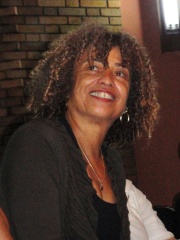
10. Angela Davis (b. 1944)
With an HPI of 72.39, Angela Davis is the 10th most famous American Social Activist. Her biography has been translated into 65 different languages.
Angela Yvonne Davis (born January 26, 1944) is an American Marxist and feminist political activist, philosopher, academic, author and social theorist. She is Distinguished Professor Emerita of Feminist Studies and History of Consciousness at the University of California, Santa Cruz. Davis was a longtime member of the Communist Party USA (CPUSA) and a founding member of the Committees of Correspondence for Democracy and Socialism (CCDS). She has been active in movements such as the Occupy movement and the Boycott, Divestment and Sanctions campaign. Davis was born in Birmingham, Alabama; she studied at Brandeis University and the University of Frankfurt. She also studied at the University of California, San Diego, before moving to East Germany, where she completed some studies for a doctorate at the Humboldt-University of Berlin. After returning to the United States, she joined the CPUSA and became involved in the second-wave feminist movement and the campaign against the Vietnam War. In 1969, she was hired as an assistant professor of philosophy at the University of California, Los Angeles (UCLA). UCLA's governing Board of Regents soon fired her due to her membership in the CPUSA. After a court ruled the firing illegal, the university fired her for the use of inflammatory language. In 1970, guns belonging to Davis were used in an armed takeover of a courtroom in Marin County, California, in which four people were killed. Prosecuted for three capital felonies—including conspiracy to murder—she was held in jail for more than a year before being acquitted of all charges in 1972. During the 1980s, Davis was twice the Communist Party's candidate for the Vice President of the United States. In 1997, she co-founded Critical Resistance, an organization working to abolish the prison–industrial complex. In 1991, amid the dissolution of the Soviet Union, she broke away from the CPUSA to help establish the CCDS. That same year, she joined the feminist studies department at the University of California, Santa Cruz, where she became department director before retiring in 2008. Davis has received various awards, including the Soviet Union's Lenin Peace Prize (since 2025 she is its last living recipient) and induction into the National Women's Hall of Fame. Due to accusations that she advocates political violence and due to her support of the Soviet Union, she has been a controversial figure. In 2020, she was listed as the 1971 "Woman of the Year" in Time magazine's "100 Women of the Year" edition. In 2020, she was included on Time's list of the 100 most influential people in the world. In 2025, Davis was awarded an Honorary Doctorate in Letters from the University of Cambridge. Davis was also honored in 2025 with the José Muñoz Award given by CLAGS (The Center for LGBTQ Studies) at the CUNY Graduate Center.
People
Pantheon has 169 people classified as American social activists born between 1660 and 2006. Of these 169, 56 (33.14%) of them are still alive today. The most famous living American social activists include Angela Davis, Jody Williams, and Catharine MacKinnon. The most famous deceased American social activists include Martin Luther King Jr., Malcolm X, and Eleanor Roosevelt. As of April 2024, 16 new American social activists have been added to Pantheon including Curtis Yarvin, Virginia Giuffre, and Julia Butterfly Hill.
Living American Social Activists
Go to all RankingsAngela Davis
1944 - Present
HPI: 72.39
Jody Williams
1950 - Present
HPI: 72.07
Catharine MacKinnon
1946 - Present
HPI: 68.71
Gloria Steinem
1934 - Present
HPI: 63.64
Edward Snowden
1983 - Present
HPI: 62.88
Jesse Jackson
1941 - Present
HPI: 60.65
Leonard Peltier
1944 - Present
HPI: 59.12
Lester R. Brown
1934 - Present
HPI: 58.25
Claudette Colvin
1939 - Present
HPI: 57.98
Tarana Burke
1973 - Present
HPI: 56.50
Sam Childers
1963 - Present
HPI: 56.23
Ruby Bridges
1954 - Present
HPI: 55.67
Deceased American Social Activists
Go to all RankingsMartin Luther King Jr.
1929 - 1968
HPI: 92.49
Malcolm X
1925 - 1965
HPI: 86.43
Eleanor Roosevelt
1884 - 1962
HPI: 86.11
Helen Keller
1880 - 1968
HPI: 81.88
Rosa Parks
1913 - 2005
HPI: 79.14
W. E. B. Du Bois
1868 - 1963
HPI: 77.66
Emily Greene Balch
1867 - 1961
HPI: 77.27
Margaret Sanger
1879 - 1966
HPI: 76.41
Harriet Tubman
1820 - 1913
HPI: 73.54
Jimmy Hoffa
1913 - 1975
HPI: 70.54
Jane Addams
1860 - 1935
HPI: 70.43
Lee Radziwill
1933 - 2019
HPI: 69.62
Newly Added American Social Activists (2025)
Go to all RankingsCurtis Yarvin
1973 - Present
HPI: 51.34
Virginia Giuffre
1983 - 2025
HPI: 49.83
Julia Butterfly Hill
1974 - Present
HPI: 48.60
Nick Fuentes
1998 - Present
HPI: 38.01
Ethan Zuckerman
1973 - Present
HPI: 37.60
Manohla Dargis
1961 - Present
HPI: 37.14
Brad Will
1970 - 2006
HPI: 36.68
Ayọ Tometi
1984 - Present
HPI: 33.96
Terri Schiavo case
1963 - 2005
HPI: 31.92
David Jay
1982 - Present
HPI: 30.46
Leelah Alcorn
1997 - 2014
HPI: 29.19
Mama Cax
1989 - 2019
HPI: 29.07
Overlapping Lives
Which Social Activists were alive at the same time? This visualization shows the lifespans of the 25 most globally memorable Social Activists since 1700.


